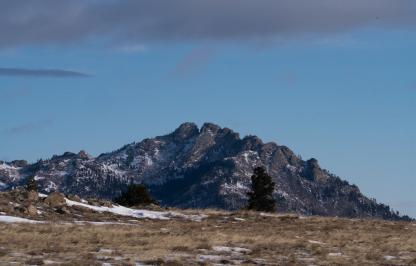The Wyoming Game and Fish Department, alongside crucial conservation partners, invested over $10.5 million in aquatic and terrestrial habitat projects in 2021. The projects are valuable for conserving and growing populations of more than 800 species in Wyoming.
Game and Fish recently released the 2021 Statewide Habitat Plan Annual Report highlighting diverse project accomplishments throughout the state. Game and Fish allocated more than $2.5 million for habitat projects and leveraged that for more than $8 million from the Wyoming Wildlife Natural Resources Trust fund, federal government funds, state funds, private landowners and local conservation partners. That is equivalent to $3.16 coming from external partners for every Game and Fish dollar allocated. Through these funds, Game and Fish executed 226 projects in 2021.
“Quality habitat is a cornerstone of wildlife management,” said Brian Nesvik, Game and Fish director. “That’s why the Wyoming Game and Fish Department continues to invest heartily to sustain wild and healthy populations of aquatic and terrestrial wildlife.”
Over the last year the SHP guided numerous aquatic habitat efforts that reconnected more than 94 miles of stream, benefiting native cutthroat and many other species.
“Reconnecting streams so fish can navigate past road crossings and diversion dams is one of the most important ways we can ensure fish populations continue to thrive,” said Paul Dey, Game and Fish statewide aquatic habitat manager. “When we combine fish passage work with improving stream habitat conditions, we begin to make a real and lasting difference.”
In addition to the aquatic habitat work Game and Fish collaborated on projects which led to the management of 725,896 acres of terrestrial habitat. Herbicide treatments to help control and prevent the spread of invasive grasses culminated at 100,278 acres, about an 18% increase compared to 2020.
“Reducing the spread of cheatgrass and other invasive grasses to benefit wildlife was a strategic move in 2021,” said Ian Tator, Game and Fish statewide terrestrial habitat manager. “We will continue to focus energy on this important task, so species like mule deer and sage grouse have access to the resources they need.”
More details on projects and the species they impact can be found in the report.
Habitat work in Wyoming would not be possible without partnerships. This year’s annual report profiles the Rocky Mountain Elk Foundation for their partnership and contributions to habitat restoration, conservation easements, land acquisition and public access across the state. In addition to their financial support, RMEF volunteers often dedicate their personal time to contribute to on-the-ground project implementation alongside Game and Fish employees.
“We couldn’t accomplish our goals or achieve the same level of impact without our fantastic partners, and in 2021 RMEF has exemplified what is possible when we have strong partnerships in place,” Tator said.
Current and past reports can be downloaded from the Game and Fish website.
Wyoming conservation partners invested $10.5 million for habitat projects
Sara DiRienzo, Public Information Officer - (sara.dirienzo@wyo.gov)


